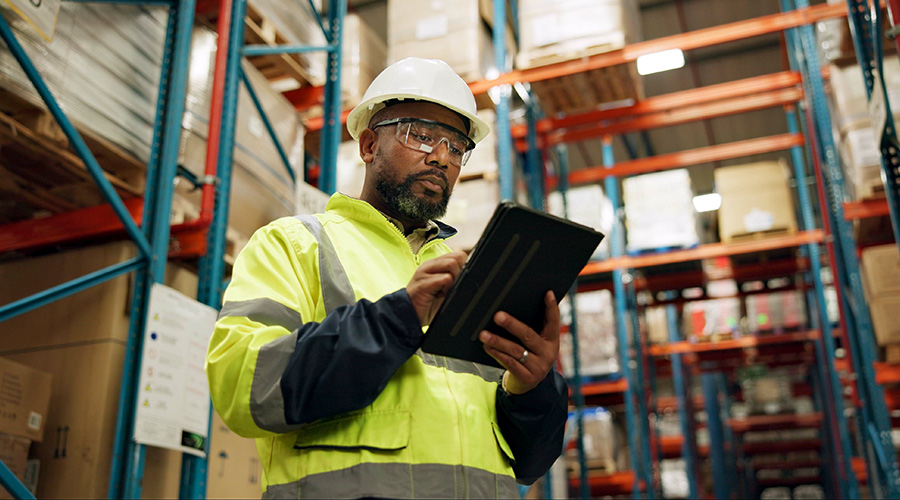7 Ways Artificial Intelligence Is the Future of FM
A range of realistic uses make artificial intelligence the future of facilities management. Here are seven ways AI will be provide major benefits for FMs.
The future looks bright for data-driven building operations. These solutions can save time when operating a building and deliver better outcomes for occupants. One difficulty with understanding AI in buildings is the fact that it can be applied in a variety of ways. There is a range of realistic use cases. The breadth of the technology occasionally creates confusion about what AI actually can do. Here are a variety of use cases that facility managers may be interested in applying in their own buildings:
1. Energy monitoring and measurement and verification (M&V). M&V is a great example of AI, because it takes what can be a very complex set of calculations (creating a building’s performance model) and automates them. Then, new variables, like weather and occupancy, can be used to provide energy consumption estimates using the same model. With enough data to observe the correlation between energy, weather, and occupancy, an accurate model can be used to calculate one of these variables if the others are available. In the case of M&V, actual weather and occupancy can be used to estimate energy use under a pre-retrofit scenario, which can be compared to the actual energy consumption after the retrofit. The difference between actual and predicted energy is a more accurate way to track energy savings (compared to looking at energy bills before and after the retrofit).
2. Demand management — in front of or behind the meter. Understanding current energy demand is very important for grid reliability. Utilities have to know how much power they’ll need to supply and want to avoid generating too much. Facility managers want to avoid high demand charges for using too much energy at the wrong times. More data on energy consumption and the characteristics that drive that use (such as weather and occupancy) can translate into better predictions about how the grid will behave. With this knowledge, it’s possible to reduce energy demand, save money, and increase grid reliability.
3. HVAC optimization. In terms of demand management, understanding the performance of subsystems, like HVAC, is important. In the summer, cooling demands in an office can be the difference between setting a new, costly demand peak, or avoiding a hefty charge. AI can provide cost savings by pre-cooling a building in the early mornings based on calendar/meeting and historic occupancy data. The building’s HVAC system would start early in the morning, when energy is less expensive, and begin cooling space for the day ahead, all without human intervention. Moreover, if a building has used a pre-cooling strategy in the past, AI may help improve future pre-cooling efforts. As the Google data center example suggests, there are significant opportunities for savings by employing AI.
4. Equipment predictive analysis. Data pulled from complex machines found in buildings, like chillers and boilers, can be overwhelming to facility managers. But, when these data streams are analyzed by a software solution, trends may appear. This analysis may indicate a high likelihood of failure in the near term, based on the condition of the equipment and reasonable estimates about how it is used (such as expected operating times). The additional insight, which may help a facility team plan upcoming maintenance, can reduce unexpected equipment outages, add predictability to the budget, and keep occupants comfortable.
5. Space planning. As more offices move to open plan designs and more flexible arrangements, there is some risk of a shortage of space, especially at peak times. Today, according to CBRE, about 40 percent of space is unoccupied. Offering too much space is not a problem for occupants, but it is very costly for the owners and operators. Reducing the amount of space too much, or increasing occupancy, may increase these costs, but also may lead to a poor working environment. With a rise in indoor space sensors, it is possible to predict demand at different times — both when planning a new open office and just for day-to-day management. AI helps by pulling in the data from these space sensors and providing estimates of occupancy, plus information that can help to resolve potential issues.
6. Predict facility cleaning needs. Custodial staff typically clean all occupied spaces regularly. This schedule-based approach is appropriate for busy spaces that are consistently used. But, with more flexibility in how occupants interact with spaces, it’s likely that some spaces will be used more than others. There is an opportunity for spaces to be cleaned only when they need it, based on actual use. Today, this cleaning schedule may be based on sensors that track occupancy, but AI can help to predict cleaning demands and even generate a schedule for service providers. The Edge in Amsterdam has already started moving in this direction, as it provides data to custodial staff on use in specific spaces, so staff are able to plan their activities based on condition. This data-driven approach to a traditional service is especially compelling in real estate, where the physical space remains the core of the offering. Moreover, AI can optimize supply by automatically ordering various materials and products for the office space, based on actual and predicted occupancy trends.
7. Safety and security. Many commercial buildings spend a significant amount of money on the indoor safety of their offices. There are a range of AI applications related to safety and security, though many are nascent. For example, instead of using a key card for access control, one startup is using facial recognition. Safety and security use cases may raise some questions about privacy, which is one reason that they may not be as common as other applications, at least not yet.
Regardless of use case, AI applications in buildings may also drive younger employees to enter the industry. Facility management is facing a talent shortage: The average employee is 51 years old. Younger employees typically look for positions that offer modern technology, and AI solutions could provide this for buildings. The facility management industry has not been effective at attracting young talent as of late. But AI technologies may remove some of the administrative tasks and make the industry more attractive to a new generation.
There has been some concern that AI may take jobs away from people. With the talent shortage in facility management, this seems unlikely. Moreover, running a building will always require some level of human interaction, too. More likely is that AI solutions simply change certain aspects of certain jobs. The jobs aren’t lost, but they are different.
These concerns fit into the bigger topic of the AI adoption cycle. Chicago Booth Review recently published an article on AI adoption and productivity growth. The article notes that development is likely to follow a J-curve, a period of low productivity growth, followed by a period of high growth. This is common when new technology is adopted, and may be due to the time it takes for enterprises to learn how to harness these capabilities. The article cites experts who believe that the AI adoption cycle will be long and unpredictable. Practically, for facility managers, this means that there is plenty of time to procure AI technology, and no need to rush. But it also means that firms should invest in training and adoption to ensure that employees use these solutions effectively.
Moving forward, AI is likely to be a larger part of the operation and occupancy of buildings. Though it may take time for buildings to fully adopt this technology, the long-term benefits will far outweigh the negatives. But the road to this point is uncertain. Facility managers should educate themselves on the capabilities that AI can deliver while also considering how the technology could help with specific issues in their buildings. AI does have the tendency to be marketed as a panacea, but beyond this hype, there are real opportunities for improving building operations.
Related Topics:














